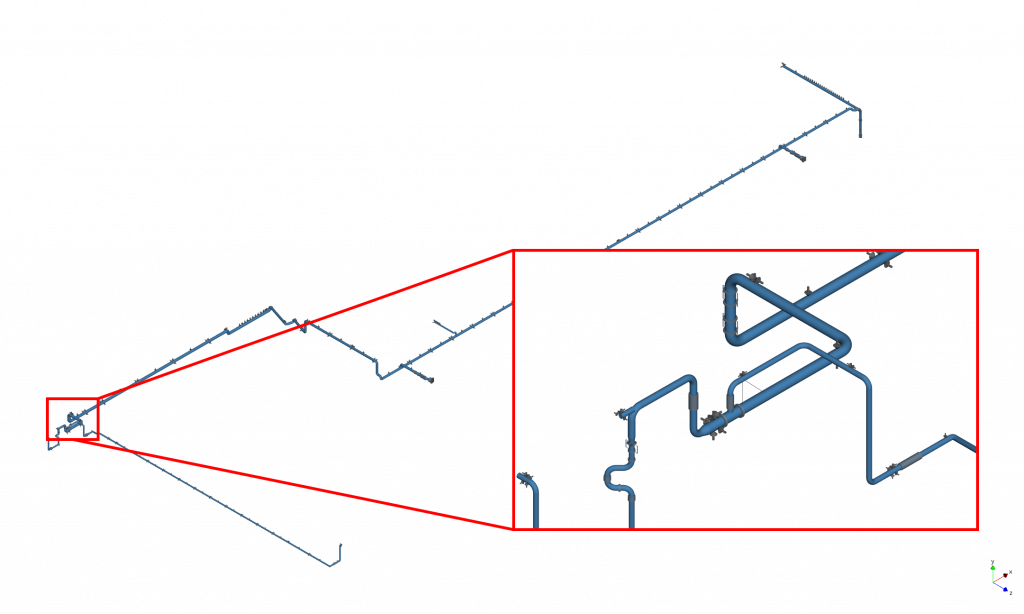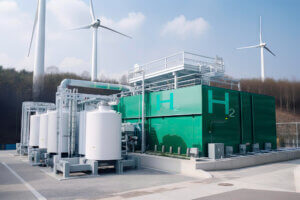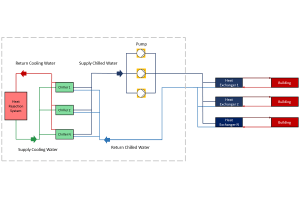Combined Pressure Surge and Dynamic Stress Analysis
Introduction
In the harbor of Antwerp an unloading line was being commissioned for use with cyclohexane. This line features two ship loading arms, located at the end of a jetty. From the loading arms, the unloading line runs towards two storage tanks.
Transient upset scenarios such as the closure of valves and the start-up or shut down of pumps will result in pressure surges within the system. These pressure surges can result in pressures that exceed the system allowables, thus proper mitigation measures needed to be determined to ensure system integrity.
Additionally, the pressure surges in the unloading line lead to unbalanced forces throughout the piping. This unbalanced force influences the stress analysis of the piping and the loadings upon the restraints. A check needed to be performed to uphold the piping system to the design code EN13480 during these transient events.
Analysis
Pressure surges caused by the determined upset scenarios were modelled using the transient one-dimensional fluid modelling package BOSfluids. The pressure profiles in the unloading line were used to determine the net (unbalanced) forces acting upon the piping.
The resultant forces were applied to a CAESAR II piping model of the system. With the dynamic solver within CAESAR II being used to calculate the stresses arising in the unloading line as a result of the pressure surges.

Results
It was found that through extension of the valve closure time, the magnitude of the pressure surges could be kept within the pressure rating of the pipe. Another recommendation was the use of a two-stage closure profile, within which the latter portion of valve closure is very slow, be implemented for one of the valves.
The dynamic piping analysis showed that the piping system would experience excessive stresses due to the pressure surges. To ensure conformance with the EN13480 piping code it was necessary to add additional restraints to remove some of the degrees of freedom. Dynaflow Research Group (DRG) worked with the client to help ensure that these new supports were proposed in realisable locations.
The end result was an unloading line that conformed with the EN13480 for all of the transient upset scenarios.




